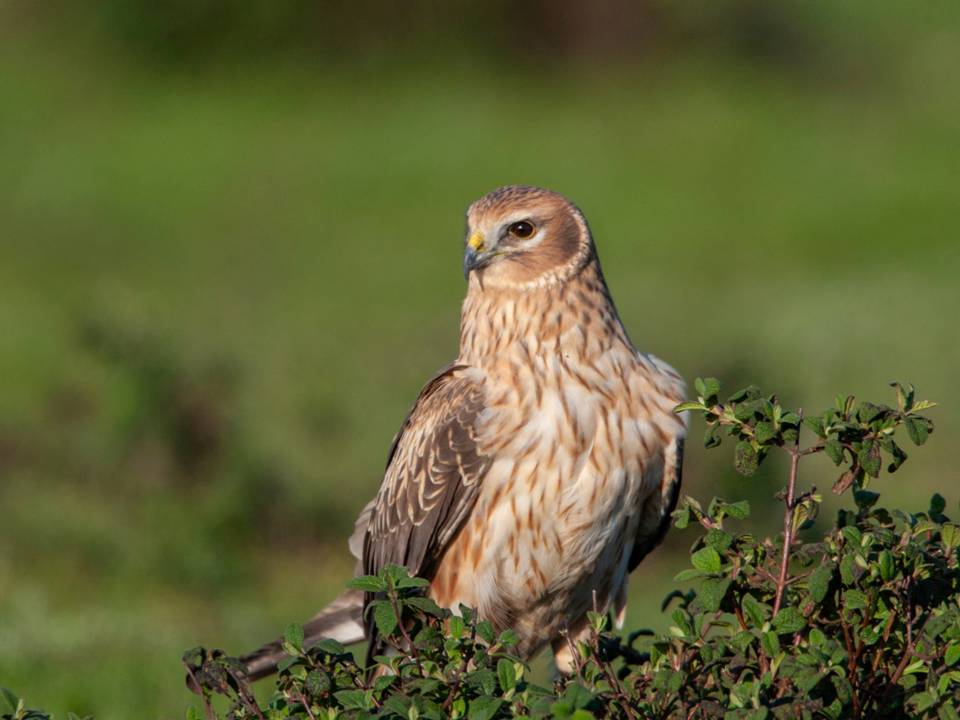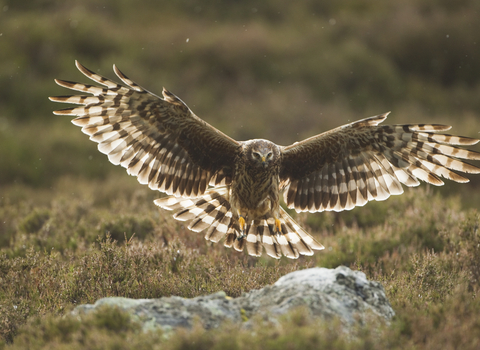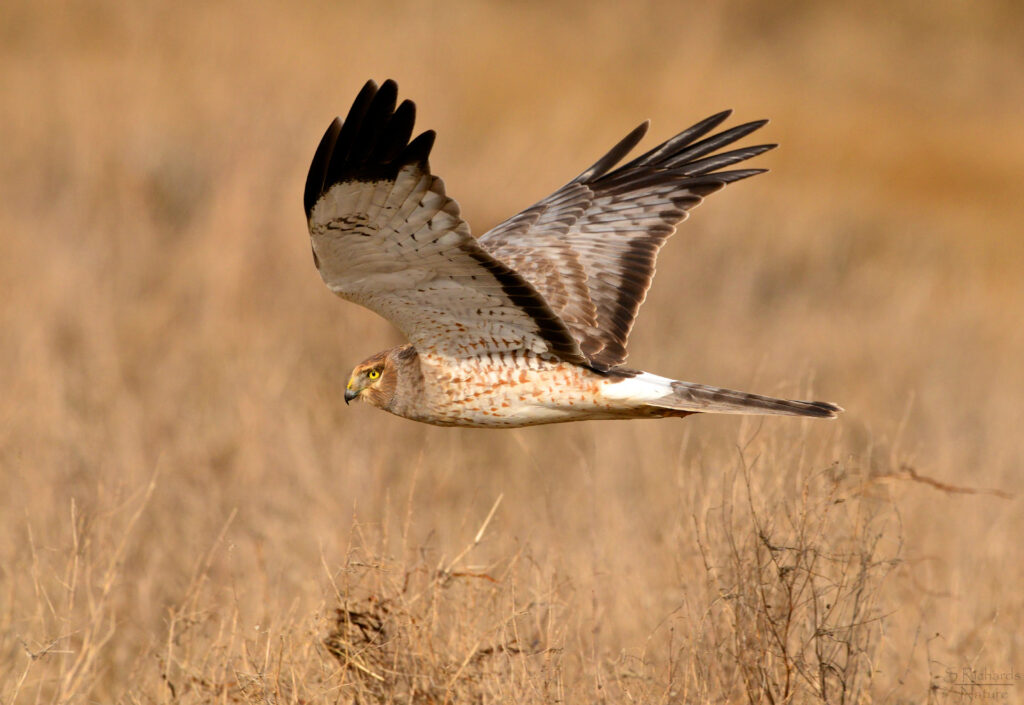The Bird of Pray Hen Harrier
The Hen Harrier, also known as Circus Cyaneus, is a bird of prey that is found in various parts of the world, including North America, Europe, Cyprus and Asia. It is known for its distinctive appearance and hunting behaviour. The hen harrier is a medium-sized raptor with a wingspan of around three feet. It has a slim, long-tailed body and a distinctive white rump that is visible in flight. The male hen harrier has a blue-grey back and wings, while the female has a mottled brown plumage. Both sexes have a white underside with black wingtips.
Known for Its Agile Hunting Behaviour
This bird of prey is known for its agile hunting behaviour. It is often seen flying low over open fields and marshes, using its keen eyesight to spot small mammals, birds, and insects. The Hen Harrier will then swoop down and catch its prey with its sharp talons before returning to its roost to consume it.

It’s Breeding Behaviour
The hen harrier is known for its breeding behaviour, which often takes place in open moorland and marshes. The female will build a nest on the ground using twigs, grass, and other plant material. She will then lay a clutch of around four to six eggs, which she will incubate for around a month. The male will provide food for the female during this time, and both parents will care for the chicks once they hatch.
Threats to Its Survival
Unfortunately, the hen harrier is facing several threats to its survival. One of the main threats is habitat loss, as the open moorlands and marshes where it breeds are being destroyed or degraded by human activities. In addition, the hen harrier is often persecuted by gamekeepers and hunters, who see it as a threat to game bird populations.

Conservation Efforts to Protect the Hen Harrier
Conservation efforts are underway to protect the Hen Harrier and its habitat. In some areas, conservation organizations are working to restore and protect the open moorlands and marshes where the Hen Harrier breeds. Efforts are also being made to reduce persecution of the bird through education and enforcement of laws protecting it.
The Hen Harrier is also being studied to better understand its behaviour and ecology. Researchers are using satellite tracking and other technologies to monitor the movements of individual birds and to identify important habitats for conservation.

A Fascinating Bird of Prey
Overall, the Hen Harrier is a fascinating bird of prey that plays an important role in the ecosystems where it lives. Its distinctive appearance and hunting behaviour make it a valuable species to conserve and efforts are underway to protect it and its habitat for future generations to enjoy.
In conclusion, the Hen Harrier is a remarkable bird of prey with a distinctive appearance and agile hunting behaviour. Despite facing threats to its survival, conservation efforts
are underway to protect this species and its habitat. By working together, we can ensure that the hen harrier continues to thrive in the wild for years to come.
Conservation efforts are crucial to protecting the Hen Harrier in Cyprus. By preserving and restoring its natural habitats, we can give these birds the space they need to thrive. Educating

the public about the importance of these creatures and enforcing laws against illegal hunting are in force safeguarding their future.
Dedication and Commitment
With dedication and commitment, we can ensure that the Hen Harrier continues to grace the Cyprus skies for future generations. By taking action to protect this iconic bird, we can also preserve the delicate balance of the island's ecosystems. The Hen Harrier is a symbol of the beauty and resilience of nature. It is our responsibility to ensure that it remains a part of Cyprus's natural heritage for generations to come. Best place to see this bird is Akrotiri Gravel Pits in Limassol.
.


